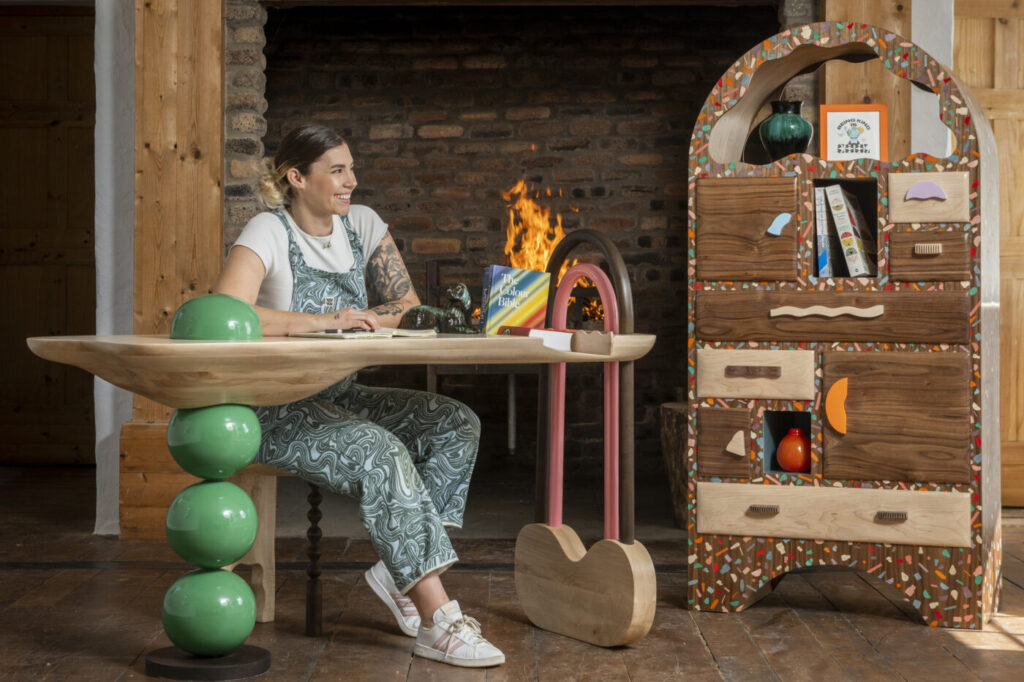From food to fashion and even furniture, there has been a noticeable shift in consumer shopping habits in the past few years. A Deloitte study found that shoppers are more socially conscious – reducing the number of new purchases and, when they do buy new, are now more inclined to choose brands based on their sustainability and ethical practices.
This shift can be attributed to the “slow living” movement which, according to Google’s Culture and Trends team, took off during the pandemic, with a rise in people searching for this term online. ‘Slow living’ means to live with intention and mindfulness, prioritising ethics. This has also manifested in the design world, with independent creators and even large brands (seemingly) concerned with the problem of overproduction and overconsumption.
As the world becomes more aware of the impact mass consumption has on the environment, the slow furniture movement is gaining momentum. In this blog, we explore why embracing this new era of furniture design is not only good for the planet, but for the soul too…
Keeping It Green
One of the primary benefits of buying ‘slow’ products is their minimal impact on the environment. Handcrafted furniture is designed to last for generations, unlike mass-produced furniture which is not made with longevity in mind. Fast furniture often ends up in landfills, contributing to environmental degradation. In 2018, the EPA estimated that 9 million tons of furniture ended up in US landfills – roughly 5% of landfill waste!
At the Chippendale School, the focus is on creating quality designs that are made to last for generations – and hopefully never see a landfill. We also strive to ensure that no material is wasted, even utilising waste sawdust to heat our workshops.

Keeping It Local
Buying locally-made furniture is also better for the environment, eliminating pollution caused by transportation. Buying local has a more profound impact on the economy, especially in the aftermath of the pandemic. Supporting local creates a ripple effect as fellow businesses in the area also benefit, from gift shops selling handcrafted items to timber merchants selling wood.
Moreover, by buying locally, you can be certain of the working conditions the furniture is produced in. You can be certain that the piece you have bought was created with care by a maker passionate about their craft – as opposed to made on a soulless (and potentially dangerous) factory line.

Keeping the Craftsmanship
Handcrafted furniture has distinctive qualities, from burls and wood grain to stunning hand-carved patterns that machines cannot replicate. Restoring an old bureau by hand or constructing a dining chair from scratch results in a treasured piece of furniture that will enhance and enrich your home.
What’s more, working with a furniture maker allows you to create a unique, one-of-a-kind piece. Craftsmen work closely with clients to turn ideas into reality – from the materials used to the finishing touches, you will be left with a truly personal piece. Ultimately, owning a piece of furniture that you had a part in designing is something that you and your family will cherish for years to come.
Here at Chippendale, we believe restoring old furniture is a way of counteracting the ‘fast furniture’ world. We even have a 1-week course dedicated to the art of furniture restoration! By making sustainable choices, everyone can help to reduce the need for fast furniture.
The slow furniture movement is gaining momentum and for good reason. By embracing this new era of furniture design, we can all make a positive impact on the planet – one piece of furniture at a time.

—
If you’re interested in learning more about the ‘slow-furniture’ movement and would like to explore the art of furniture making, we have a range of courses on offer, from our weekend short courses to our 9-month Professional Course. Get in touch to find out more!
